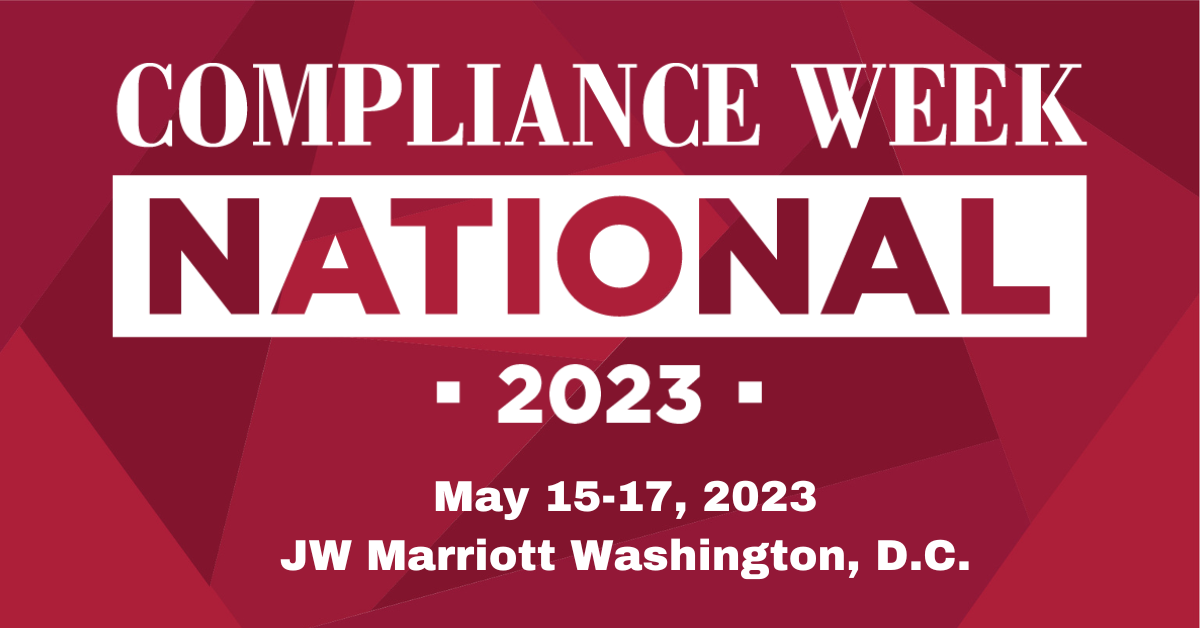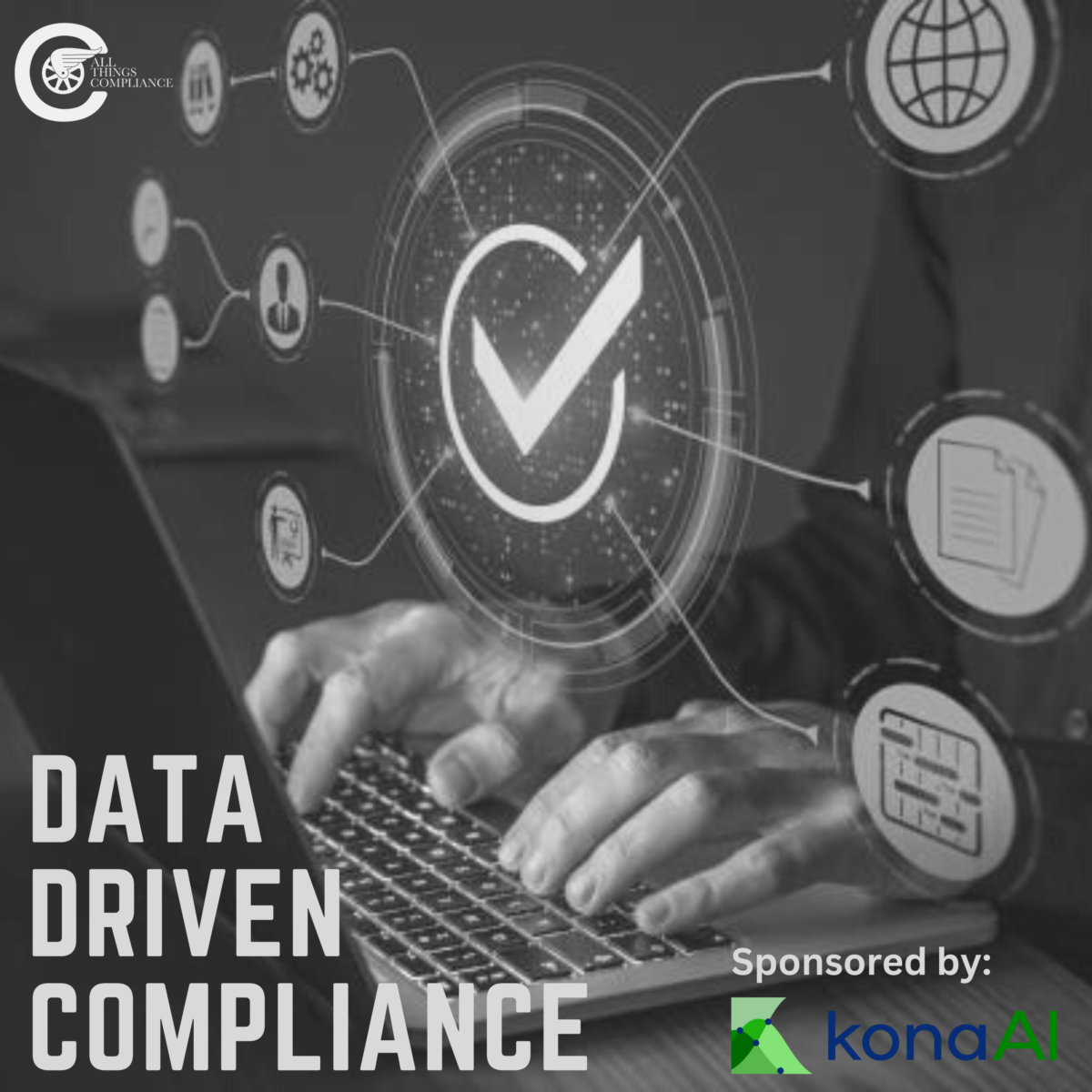I recently had the opportunity to visit with Vince Walden for the inaugural episode of the newest podcast on the Compliance Podcast Network, Data Driven Compliance. Walden is a compliance professional with 15 years of experience, who left his day job and founded Kona AI, a cutting-edge innovation for compliance professionals. Kona AI is an on-premise platform to build advanced analytics and compliance monitoring that aligns with the DOJ’s expectations.
Over this multi-part blog post series, I will be discussing how to create an effective compliance program through the use of data analytics by considering the requirement laid out by the Department of Justice (DOJ) in their recent pronouncements on a best practices, as well as the key trends and lessons learned from enforcement actions. Finally, we will consider the speech by Kenneth Polite on the changes to the Corporate Enforcement Policy and how to meet those requirements using data analytics.
It is important for compliance professionals to make informed decisions that are driven by data to ensure that the compliance program is effective and efficient. Data-driven decisions enable compliance professionals to make decisions that are backed by evidence, allowing them to make informed decisions that are based on facts and figures rather than assumptions or guesswork. Without data, compliance professionals would be unable to accurately measure the effectiveness of their compliance program or identify potential risks or areas of non-compliance.
Data-driven decisions also allow compliance professionals to identify areas of strength and opportunities for improvement. By utilizing data, they can identify trends, patterns, and correlations that can help them understand the underlying causes of compliance issues and formulate strategies to address them. Furthermore, data-driven decisions are more likely to be accepted and supported by stakeholders, as they are based on facts and have been thoroughly researched and analyzed. Ultimately, data-driven decisions ensure that compliance professionals are making informed decisions that are in the best interests of their organization. Walden articulate 10 steps you need to follow:
- Assess a company’s conduct;
- Self-disclose;
- Know quickly if there is a problem or not;
- Have access to relevant sources of data;
- Conduct monitoring at the beginning and throughout the lifespan of the relationship
- Have an on-premise application;
- Look up vendors and transactions quickly;
- Run data through a library of corruption and fraud tests;
- Look at a predictive model and see if it meets the profile of an improper payment; and
- Have visibility into data almost at your fingertips.
Under Step 1, the assessing of your company’s conduct begins with understanding the DOJ’s expectations for an effective compliance program. Companies should have policies and procedures in place that enable them to access relevant sources of data, conduct ongoing monitoring of third-party relationships, and hold compliance officers accountable for the effectiveness of the compliance program. Additionally, companies should ensure they have the necessary technology in place to be able to quickly conduct an analysis of their data to determine if a self-disclosure is necessary. By taking these steps, companies can ensure they are meeting the DOJ’s expectations and are in a better position to successfully self-disclose if necessary.
Finally, assessing a company’s conduct should also involve an analysis of the company’s external communications. Companies should have a process in place for responding to inquiries from the public, media, and other stakeholders, and they should ensure that all communications are accurate and timely. Additionally, companies should ensure they are regularly engaging with their stakeholders to keep them informed of any changes in their compliance policies or procedures. By taking these steps, companies can ensure they are engaging in effective external communications that foster trust and confidence in their compliance program.
Self-disclosure is a key step in achieving an effective compliance program. Walden lists this as Step 2. It is important for companies to to demonstrate their commitment to compliance and avoid possible enforcement actions. Recently Kenneth Polite reiterated the importance of self-disclosure and discussed the changes to the corporate enforcement policy. Self-disclosure is viewed as a sign of good faith and can have a major impact on the DOJ’s decision to pursue or not to pursue a case.
However, to meet this requirement under the DOJ Corporate Enforcement Policy, companies need to have access to their data quickly in order to determine if self-disclosure is necessary. This means having an on-premises platform that can quickly search through transactions, identify potential corrupt payments, and compare them to a predictive model. This will demonstrate that they have an effective compliance program for the DOJ to consider them for leniency. But it requires having access to relevant sources of data and conducting monitoring throughout the relationship with third parties. Having an analytics platform can help companies detect anomalies in their data and identify patterns in the data that can help create an effective compliance program.
In addition to self-disclosure, companies must also take steps to ensure that their compliance program is effective and meets the standards of the DOJ. Companies should have access to a streamlined technology platform that helps them manage their compliance efforts. This platform should have tools to monitor third-party relationships, identify suspicious activity, and monitor compliance efforts. An effective compliance program also requires ensuring that employees receive proper training and understanding of the company’s policies and procedures. Companies should also have an audit system in place to regularly check that their compliance program is meeting the standards of the DOJ. This audit system should include periodic assessments of the compliance program and regular reviews of third-party relationships.
Of course, if you do not know you have a problem, you organization cannot self-disclose and cannot meet the mandates to demonstrate an effective compliance program. Hence under Step 3, an organization must understand if there is a problem or not which warrants self-disclosure. With the right technology in place, companies can monitor their compliance efforts and ensure that they are meeting the expectations of the DOJ. Additionally, companies should ensure that employees are properly trained on the company’s policies and procedures. Taking these steps can help create an effective compliance program that meets the expectations of the DOJ.
Join us tomorrow where continue our exploration of using data analytics to create an effective compliance program.
Listen to Vince Walden on Data Driven Compliance.










